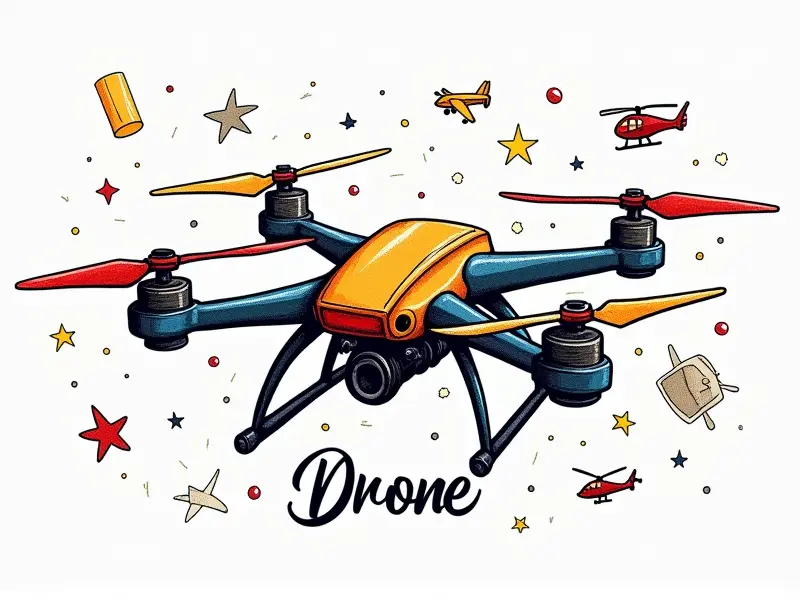Drone flight controller

Best Drone Flight Controllers for Beginners
Choosing the right flight controller (FC) is crucial for any drone enthusiast. For beginners, it's essential to select a flight controller that offers ease of use while still providing robust performance. Some top choices include:
- Betaflight Compatible FCs: These controllers are widely supported by the Betaflight firmware and offer extensive customization options.
- Airbot F405: Known for its reliability and affordability, this controller is a popular choice among beginners due to its user-friendly setup process.
- KISS Flight Controller: This FC offers excellent performance with easy-to-use software tools like KISS Configurator, making it ideal for those new to drone building.
Top FPV Flight Controllers Explained
FPV (First Person View) flight controllers are specifically designed for racing and freestyle drones. They offer advanced features such as:
- High Refresh Rates: These controllers can process data at extremely high speeds, ensuring smooth video transmission.
- Built-in OSD (On-Screen Display): Provides real-time telemetry and flight information directly on the FPV screen.
- Customizable Profiles: Allows pilots to tailor settings for different flying conditions and preferences.
Choosing the Right Flight Controller
Selecting a flight controller involves considering several factors such as:
- Budget: Determine how much you are willing to spend on your FC. Higher-end controllers offer more features but come with a higher price tag.
- Purpose: Decide whether you need an FPV controller for racing or a general-purpose controller for aerial photography and videography.
- Compatibility: Ensure the flight controller is compatible with your drone's frame, ESCs (Electronic Speed Controllers), and other components.
Advanced Features in Modern Drone FCS
Modern flight controllers come equipped with advanced features that enhance performance and reliability. Some notable features include:
- Auto-Leveling: Automatically adjusts the drone's orientation to maintain stability.
- Dual GPS Support: Provides redundancy in case one GPS module fails, ensuring safer flights.
- Built-in Telemetry: Offers real-time data transmission for monitoring flight parameters.
Budget-Friendly Flight Controllers Reviewed
If you're looking to save money without compromising on quality, consider these budget-friendly options:
- Airbot F405: Offers excellent performance at a very affordable price point.
- KISS FC Lite: A lightweight and cost-effective option that still provides robust features for beginners.
Comparing Popular Flight Controller Models
To help you make an informed decision, here's a comparison of some popular flight controller models:
| Model | Budget-Friendly | Advanced Features | User Reviews |
|---|---|---|---|
| Airbot F405 | Yes | No | Positive |
| KISS FC Lite | Yes | No | Mixed |
| Betaflight Compatible FCs | No | Yes | Positive |
Essential Components of a Flight Controller
A flight controller consists of several critical components:
- Main Processor: The brain of the FC, responsible for processing data and controlling the drone.
- Sensors: Include accelerometers, gyroscopes, barometer, and GPS to provide accurate orientation and position information.
- Power Management Unit (PMU): Manages power distribution and voltage regulation within the FC.
How to Install a New Drone Flight Controller
Installing a new flight controller involves several steps:
- Prepare Your Components: Gather all necessary tools and components, including your new FC, ESCs, motors, and propellers.
- Mount the FC: Securely mount the flight controller to your drone frame according to manufacturer instructions.
- Connect Cables: Connect power cables from ESCs to the FC, ensuring proper polarity and secure connections.
Setting Up Your First Flight Controller
Once you have installed your flight controller, follow these steps to set it up:
- Flash Firmware: Use a USB programmer or Betaflight configurator software to flash the latest firmware onto your FC.
- Tune Parameters: Adjust parameters such as PIDs (Proportional, Integral, Derivative) for optimal flight performance.
- Test Flight: Conduct a test flight in a safe environment to ensure everything is functioning correctly before flying outdoors.
Essential Tips for Tuning Your Drone FC
Tuning your flight controller can significantly improve its performance. Here are some tips:
- Start with Default Settings: Begin by using the default settings and gradually make adjustments.
- Use a Simulator: Test tuning changes in a simulator before applying them to your actual drone.
- Monitor Flight Data: Use telemetry data to fine-tune parameters for better stability and responsiveness.
Maximizing Performance with Custom Tuning
To get the most out of your flight controller, consider custom tuning:
- Adjust PIDs: Fine-tune Proportional, Integral, and Derivative gains for optimal control.
- Optimize Gyro Settings: Adjust gyro sensitivity and filtering to enhance stability and responsiveness.
- Calibrate Sensors: Ensure accurate sensor readings by performing a thorough calibration process.
By following these guidelines, you can choose the right flight controller for your needs and optimize its performance through proper setup and tuning. Happy flying!
Conclusion
Selecting and setting up a flight controller is crucial for achieving optimal drone performance. By considering factors such as budget constraints, advanced features, and user reviews, you can make an informed decision that suits your specific requirements. Additionally, following proper installation and tuning procedures will help ensure reliable and efficient operation of your drone.

